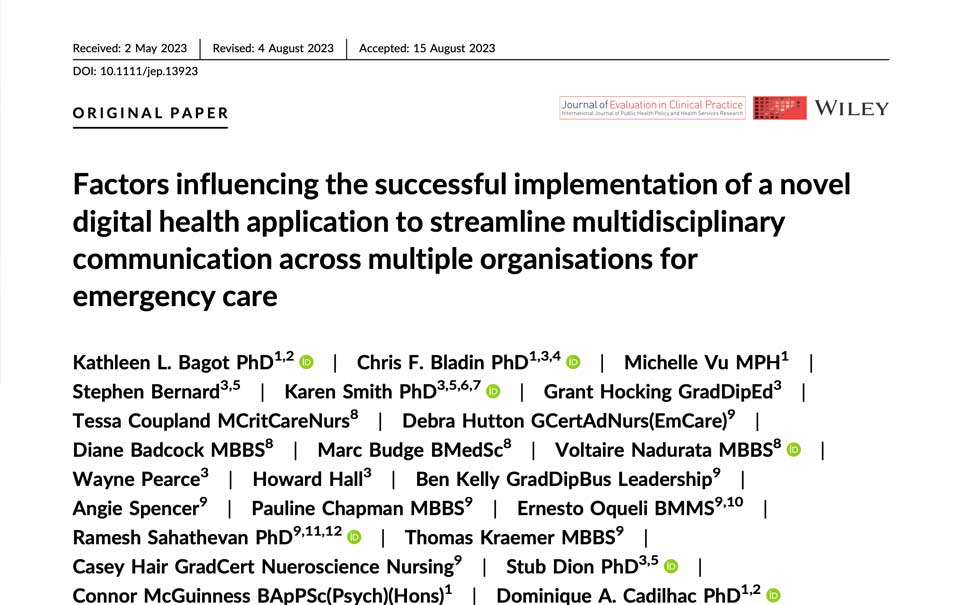Does Your Team Feel Unseen? Close the Leadership Disconnect with 2-Way Communication
Editor's Note: In July 2025, EMS1 and Fitch & Associates released their annual EMS trend survey, What Paramedics Want, proudly sponsored by Pulsara....
2 min read
 Team Pulsara
:
Dec 13, 2017
Team Pulsara
:
Dec 13, 2017

When someone suffers a stroke or heart attack, getting the patient to definitive treatment quickly is crucial to their survival and quality of life post-event. But, getting treatment quickly requires communication between EMS, several care teams within the hospital, and sometimes even teams from other hospitals when transfer is required.
Too often, this communication breaks down at one or many points along the way due to the outdated and non-integrated technology systems those clinicians rely on to relay their information. This antiquated technology, including phone trees, fax machines, pages, sticky notes ... (yes, really), causes critical patient information to be missed, which can contribute to treatment delays and medical errors.
 To ameliorate these frustrations, researchers in Australia conducted a preliminary and final study to determine:
To ameliorate these frustrations, researchers in Australia conducted a preliminary and final study to determine:
To accomplish these aims, Pulsara was implemented for a 6-month pilot in 1 hospital and 11 EMS facilities in a regional area of Victoria. Clinicians in these facilities who treat stroke and/or STEMI patients were trained on the use of Pulsara, and were then given surveys "addressing organizational readiness (4 items) and clinician acceptance and intentions to use (22 items) with 7 point response scales: 1 completely disagree, 7 completely agree."
Of the 69 survey responses received (40 from paramedics, 29 from hospital clinicians), the following preliminary results were discovered:
According to the research, staff at both organizations reported that they were ready for the the implementation of Pulsara. Performance and effort expectancies were found to have contributed positively to this readiness to use the platform.
Following the positive results, Pulsara implementation was expanded to a 12-month trial in two Victorian regional areas.
The concluding study, "Factors influencing the successful implementation of a novel digital health application to streamline multidisciplinary communication across multiple organisations for emergency care," was published in the Journal of Evaluation in Clinical Practice, 18 September 2023.
Researchers found that digital health communication tools are most effective when teams are change-ready and supported by training. Clear benefits, local champions, and technical support drive adoption. The study concluded that "...a single communication system [Pulsara] can be implemented with good acceptance across multiple healthcare organisations providing prehospital and intra-hospital care."
The data is clear. From academic published research to hospital and EMS case studies, Pulsara decreases treatment times and improves patient care. Check out our Resources page for more published research and case studies.

Editor's Note: In July 2025, EMS1 and Fitch & Associates released their annual EMS trend survey, What Paramedics Want, proudly sponsored by Pulsara....
![[PRESS RELEASE] Published Research Finds Up to 31% Faster STEMI Treatment Times in Rural Hospital Setting with Pulsara](https://www.pulsara.com/hubfs/_1_website-page-blog-assets/pulsara-hosp-teams-assign-cardio-stemi-rn-1200x701.jpg)
Published research shows how using Pulsara, alongside standardized field activation and a focus on stakeholder relationships, improves STEMI care and...

Editor's Note: In July 2025, EMS1 and Fitch & Associates released their annual EMS trend survey, What Paramedics Want, proudly sponsored by Pulsara....